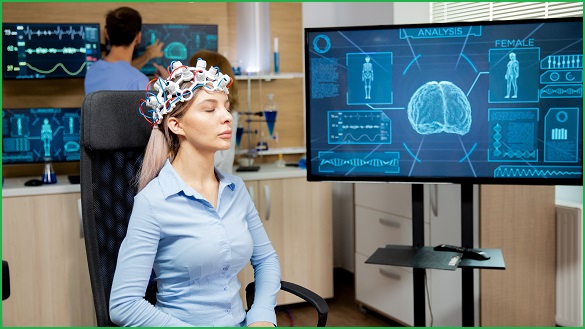Microsoft has filed a patent for a system which mines cryptocurrency through body activity, like heart rate and brain waves, that could be used by advertisers.
The patent describes an 'overarching system' whereby a blockchain provides a server with a computational task that gets handed to a sensor attached to a person.
That ‘sensor’ may be a heart rate monitor, thermal sensor, camera, fMRI scanner, or “any other sensor or scanner that can measure or sense body activity or scan human body”.
Microsoft specifically describes different brain waves (gamma, beta, theta, delta) and how they can be measured “to evaluate the electrical activity of the brain, such as deep concentration”.
After being assigned a blockchain proof-of-work task by the server, the user device solves it based on ‘body activity data’ generated by the person.
The patent says specific data could be produced by watching an advertisement for a certain time, for example, or through using a specific social network or website.
The data then gets relayed back to the cryptocurrency system which can check the user-generated hash based on, for example, “if the vector(s) received from [the] user device have one or more mathematical properties set by [the] cryptocurrency system/network”.
This could be done by determining “whether the vector(s) of the body activity have similarity (or a relationship) with a legitimate vector (or a baseline vector) set by an algorithm of [the] cryptocurrency system”.
If it all matches up, the user is rewarded for their work with cryptocurrency.
A diagram from Microsoft's patent describing the overarching system.
Getting the data
Although it is just a patent at the moment, much of the technology for Microsoft’s blockchain-enabled system currently exists.
A wealth of consumer devices are on the market today that gather the kinds of body-activity Microsoft has included in its cryptocurrency patent.
Smart watches like those produced FitBit – which was acquired by Google late last year – can read real-time heart rate data.
And there is a growing interest from tech giants in exploring ways of directly capturing and reading brain activity.
Elon Musk’s company, Neuralink, is currently developing technology that will allow people to control smart phones using implants that capture signals from neurons.
Musk not only wants to read neuron activity, but to one day create it using the Neuralink.
A similar technology has already been demonstrated as a way of giving people sight through a camera that sends images directly to the brain via a small device attached to the visual cortex.
Facebook has also shown interest in mind-reading technology.
Last year, the social media giant unveiled more details about its device that measures and interprets brainwaves from outside the human skull.
Facebook also acquired CTRL-Labs – a company that has developed a wrist-mounted device which intercepts signals the brain sends to your fingers, allowing you to control virtual hands without lifting a finger – showing the company’s desire to gain more access directly into people’s brains.
The future of work
In the face of large-scale automation across most of our economy’s industries, creating unique ways for humans to produce value is an expanding field of research.
The Dutch Institute of Human Obsolescence (IoHO) explores ways of producing capital through what it calls “invisible labour”.
One IoHO project was to turn the heat produced by human bodies into cryptocurrency in a way that resembles the potential of Microsoft’s patent.
“A single human body at rest radiates 100 watts of excess heat,” the IoHO website says.
“We created a body-suit that uses thermoelectric generators to harvest the temperature differential between the human body and ambient and converts it into usable electricity.
“The electricity generated is then fed to a computer that produces cryptocurrency.”











